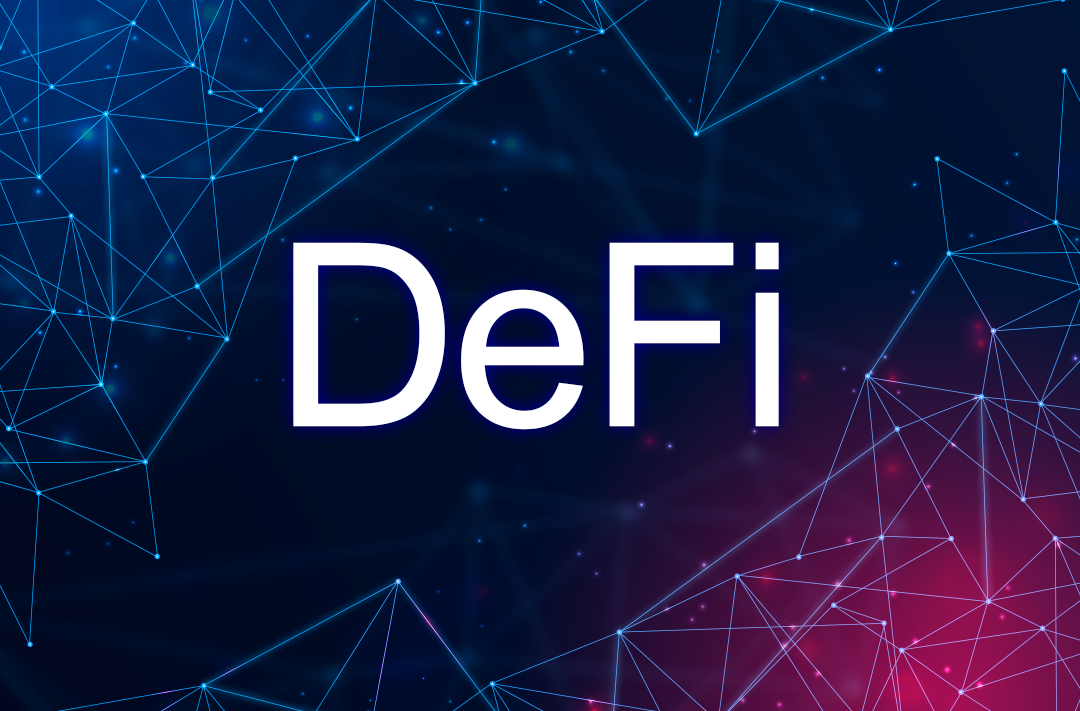What is DeFi?
DeFi, or Decentralized Finance, is a completely new stage in the development of the financial system

15.02.2021
5039
4 min
3
. As the name implies, it is built on a decentralized architecture, which almost completely eliminates interference from the state or banks. The main goal of DeFi is to create a transparent ecosystem where each person is the owner of their money.
At the moment, the capitalization of decentralized finance exceeds $64 billion, and there are over 18 000 projects in the market. The number of blocked funds in DeFi is $38,34 billion, and the market continues to grow every month. In just 1 year, it has grown more than 41 times: from $931 million to $38,34 billion.
What are the reasons for this explosive growth of DeFi? Let's find out together
First and foremost, DeFi is interesting to members in terms of saving money. With no intermediaries, you can get a loan with a lower interest rate, without hidden fees, and without filling out piles of paperwork. Or you can money to a partner in just a few seconds, while paying a very small transaction fee.
Another reason for the high popularity is directly related to DeFi's technology. These projects are blockchain-based and use Ethereum smart contracts for transactions. All this guarantees users maximum reliability and security of their own funds. DeFi projects use open-source protocols and financial transactions are made in a public registry. All information is in the public domain and can be verified by any member of the ecosystem.
DeFi opens up the world of finance to millions of people deprived of access to banking services for one reason or another, for example in poor countries or rural areas. All it takes is a simple smartphone to get the same opportunities as the world's leading banks: take out loans, buy various assets, open deposits, and even create your own currency. And all this in a few minutes, without filling out forms, references, queues, and lengthy verifications.
Examples of large-scale DeFi projects
One of the most famous projects in the world of DeFi is Uniswap, which provides its users with the ability to exchange different types of assets and earn money by providing liquidity. When other users make trades on the platform, you can earn a percentage of the service's fee.
Uniswap is a decentralized exchange (DEX), free from intermediaries and interference from third parties. You don't even have to provide passport data to work with the exchange, and transaction fees are only 0,3% regardless of the transaction amount.
Another interesting project Aave offers users to receive loans or earn money by lending on a single decentralized platform. All transactions on the platform are performed by smart contracts, which guarantees transparent and fair terms, with no risk for either party.
Another example is the MakerDAO DeFi platform, positioning itself as an improved version of money, available to everyone without being tied to time and place. Aave users can freely exchange tokens, lend money and earn deposits. The project uses its own DAI Stablecoin, which has a value equal to $1.
Today there are hundreds of successful projects in the field of decentralized finance. This is a promising and fast-growing market that continues to attract users and followers from around the world.
You can always see the full list of leading projects at https://defimarketcap.io/.
Ethereum 2.0 as a multiple growth trigger for DeFi
The Ethereum network (on which most DeFi projects run) has already begun the process of upgrading to Ethereum 2.0. Cryptocurrency developers plan to solve the problem of network scalability and significantly reduce fees while increasing the speed of transactions.
It should be noted that the problem of high fees in the Ethereum network was the main “brake” of the DeFi market in 2020. The cost of fees in periods of high load could exceed the number of transferred funds.
Prior to the launch of Ethereum 2.0 zero phase in November 2020, a deposit contract was also launched, to which users deposited funds to participate in staking. By February 10, 2021, the funds blocked in the smart contract exceeded 3 million ETH (over $5,3 billion). These sums will be blocked up for an extended period of time (possibly for several years) before the second phase is launched. And this could provide DeFi with excellent opportunities for explosive growth. After all, there will be demand in the market for a solution that will allow these funds to be used without jeopardizing network upgrades.
And that solution appears to have already been found. Blocked ETH is essentially a contract that guarantees a certain amount of cash flow in the future, which can be compared to bonds. DeFi's solution is to issue ETH 2.0 tokenized bonds. By giving a lender a token that is created by a fully collateralized smart contract, validators can receive funds in unblocked source ETH. The upside is to guarantee that when the blockchain is over, the lender will receive not only the original ETH but also the accumulated staking rewards. The implementation of such an opportunity in the near future may open a multi-billion dollar market for DeFi and bring new interesting projects to it.
Useful material?
Basics
Why Satoshi Nakamoto’s technical manifesto for a decentralized money system matters
Oct 31, 2022
Basics
Experts evaluated the development prospects of the new ecosystem and the investment attractiveness of its token
Oct 20, 2022
Basics
How to track fluctuations correctly and create an effective income strategy
Sep 13, 2022
Basics
Review of the most profitable offers from proven trading platforms
Aug 29, 2022
Basics
The Ethereum Foundation team has published a breakdown of major misconceptions about the upcoming network upgrade
Aug 18, 2022
Basics
What benefits the exchange offers, and what else is in the near future
Aug 4, 2022









 Telegram
Telegram  Twitter
Twitter